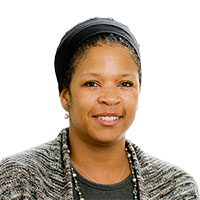A long walk from charity to justice

Juneteenth, a recognized holiday in all but three U.S. states, marks the end of slavery in the United States. On June 19, 1865, in Galveston, Texas, Major General Gordon Granger notified the last enslaved people in the country of their freedom. Reading from General Order #3, Granger announced:
The people of Texas are informed that in accordance with a Proclamation from the Executive of the United States, all slaves are free. This involves an absolute equality of rights and rights of property between former masters and slaves, and the connection heretofore existing between them becomes that between employer and hired laborer.
It’s 2020 and the Black community is still awaiting its equality of rights and rights to property, as evidenced by recent events. As the social movement against racial inequality and police brutality persists, we wanted to share insights on giving and justice as Black women at Candid who sit at the intersection of philanthropy, race, and equity.
Philanthropy has a proven history of responding to, and at times leading, in moments of crisis. The current COVID-19 pandemic led philanthropy to commit more than $11 billion dollars toward combating the virus’s effects and prompted organized philanthropy like the Ford Foundation to take unprecedented steps to expand its grantmaking capacity.
Candid, too, has added its voice and taken action. On June 4, we issued a statement about recent killings of Black people and affirming that Black lives matter. Further, the executive leadership provided a paid day off to allow staff to pause, reflect on the historic movement, and grieve as needed on the day of George Floyd’s funeral. Today, for the first time in Candid’s history (and that of our predecessor organizations, Foundation Center and GuideStar), we are celebrating Juneteenth as an official holiday for our organization.
I asked three of my colleagues at Candid to reflect on the intersection of race, equity, and philanthropy in this moment.
 Asia Hadley, director of partnerships, South
Asia Hadley, director of partnerships, South
Q. Candid curates a webpage of data on philanthropy’s response to racial equity, documenting philanthropic dollars contributed to ($5.2 billion since 2008) and insights from those doing racial equity work. How would you qualify philanthropy’s overall response to racial justice, and where do you see the field needing to improve?
A. There is tremendous opportunity for more foundations to support racial justice. It’s almost as if we are seeing an awakening happening among White Americans, who are being forced to face the prevalence of racial injustice in policing and in numerous other facets of life, such as health care, housing, and employment, to name a few. It’s hard to address systemic issues when many White Americans don’t believe that systemic problems exist. Fortunately, their views are slowly changing. For example, according to a Pew Social Trends Study, 48 percent of White people now say the bigger problem is people overlooking discrimination rather than seeing it where it doesn’t exist (52 percent). However, this statistic speaks volumes about how much work is still needed for White people to see what’s so glaringly obvious to Black people, Indigenous people, and people of color. There are only 5,892 funders that support social justice, but social sector professionals have already given many suggestions on how philanthropy can show up and do better. Here are a few suggestions from the field:
- Support Black-led organizations engaged in racial justice.
- Look within and analyze the diversity at the staff, leadership, and board levels at your own organizations.
- Collaborate with other funders to increase collective impact in the area of social justice.
- Give through an equity lens at all times, particularly during COVID-19 and beyond.
- Be transparent and seek demographic transparency from grantees.
As Candid’s statement asserts, “Putting an end to systemic racism here and around the world is going to require nonprofits and foundations to step up like never before.” Through collective action, we can significantly decrease racial injustice.
 Kristen Kenner, marketing manager
Kristen Kenner, marketing manager
Q. Many companies have broken their silence and have begun to express anti-racism values. How well has philanthropy communicated its values around anti-racism, and how would you like to see those values be promoted over the long term?
A. From my perspective, while some foundations have shown support for racial justice, many more have failed to address the issue head on. Failure to address systems of oppression is the exact antithesis of philanthropy—a desire to promote goodwill and the welfare of others. Philanthropy cannot idly stand by as a neutral party, especially amidst a global shift where many organizations and companies have taken a strong stance in support of anti-racism. This may manifest different ways for different organizations, but ignoring a racial equity lens means ignoring a key factor in society that impacts every mission.
In the long term, it would behoove philanthropy to be on the right side of history by actively communicating and embodying anti-racist values. In practice, this looks like anti-bias training, pay equity, fair hiring practices, simpler grant application processes, and consistent reinforcement that racism, discrimination, and oppression have no place in philanthropy or its networks. Philanthropy is fueled by the altruistic desire to do good, and good can only be achieved by creating a space where all voices are heard, valued, and uplifted.
 DeeDee Dickey, vice president of talent
DeeDee Dickey, vice president of talent
Q. It has been well documented that the social sector, inclusive of charities and foundations, lags in diverse representation in staffing, leadership, and board governance. How do you see the lack of diversity and inclusion impacting the sector?
A. The lack of diversity and inclusion in the sector is an ongoing challenge, especially at the leadership level. In particular, board governance and leadership at all organizations, regardless of the sector, is a reflection of longstanding issues entrenched in our society. The “Diversity Gap in the Nonprofit Sector” states, “87 percent of all executive directors or presidents were white, and that there was only minimal representation of African Americans (6 percent), Asian Americans (3 percent), and Hispanics (4 percent) in those positions.” In comparison, those figures aren’t much better at corporations. In 2017 Fortune magazine indicated that White men account for 72 percent of corporate leadership at 16 Fortune 500 companies. Furthermore, according to Diversity Jobs, 68 percent of C-level positions are held by White men, 19 percent by White women, with men and women of color representing the balance. These statistics are almost identical to the nonprofit sector. The numbers are even more dismal for the LGBTQ community.
Suggestions for conquering the status quo haven’t changed much since I began working over 25 years ago—develop a diverse pipeline and talent pool, provide diverse employees with mentors, create a culture where they feel appreciated and welcomed, DEI training classes for everyone, etc. But the reality is that all of these efforts combined rarely move the needle. When and if they do, positive changes are often slow and minimal.
Candid’s executive team, which is approximately 50 percent people of color and 40 percent female, is statistically far beyond many organizations, but what can be done to finally see widespread impact and significant change across the entire sector? I’m not really sure, but we can start with foundations and corporations committing to:
- leading by example and diversifying their own leadership team and boards;
- funding full scholarships for diverse populations who commit to working in the social sector;
- sponsoring post-graduate programs that specifically educate diverse professionals on how to transition from individual contributors and mid-level managers to leadership positions;
- increasing financial support to those nonprofits with leaders of color and those with an appropriate diverse representation on their board of trustees, as well as corresponding statistics between staff demographics in comparison to the constituents the nonprofit serves; and
- putting the same emphasis and value on work experience that we tend to place on fancy graduate degrees when making hiring decisions.
I know they say this work is a marathon and not a sprint—I often utter those same words myself, but after almost three decades, I’m losing steam and running out of breath. To the rescue (hopefully) is Generation Z.
DiversityJobs.com indicates Gen Zs are “the most racially diverse generation in American history … are young, educated, socially active and they are ready to change the way we all work.” Additionally, women continue to enter the workforce in droves. Plus, the Latino and Hispanic population in the U.S. is steadily growing (gracias a Dios), the significant contributions of immigrants from a broad range of countries is gradually being recognized and afforded similar opportunities regardless of the country of origin, the LGBTQ community is starting to obtain the legal protections it needs to be empowered, biracial and multiracial individuals are at long last being acknowledged, Asian Americans are progressing into senior leadership positions at a rate that’s better aligned with their educational achievements, and Native Americans are beginning to receive the support and respect they so rightly deserve.
All things considered, if predictions about the future demographic shifts in the U.S. are to be believed, Sam Cooke’s classic “A Change Is Gonna Come” is more than likely true, albeit long overdue, but I’m just sad that I probably won’t be alive to see it in all its glory.
Closing thoughts
So, where does philanthropy go from here? Is there progress to be made between charity and justice?
The gravity of the dual pandemics the country is facing penetrates news feeds, social media, legislatures, sports, dinner tables, and our individual psyches. The facts laid out are not to suggest that philanthropy alone is to carry the burden of eradicating racism, heal the deep wounds in Black, Indigenous, and people of color communities, or to gap-fill the historical disparities that have burdened generations.
Instead, there is opportunity to learn from the past (follow the data and research), lean into the moment (identify alignment between mission and community’s outcry), and take steps toward justice (embrace the strategies and guidance of those closest to the problem and solutions).





